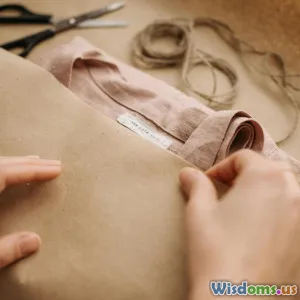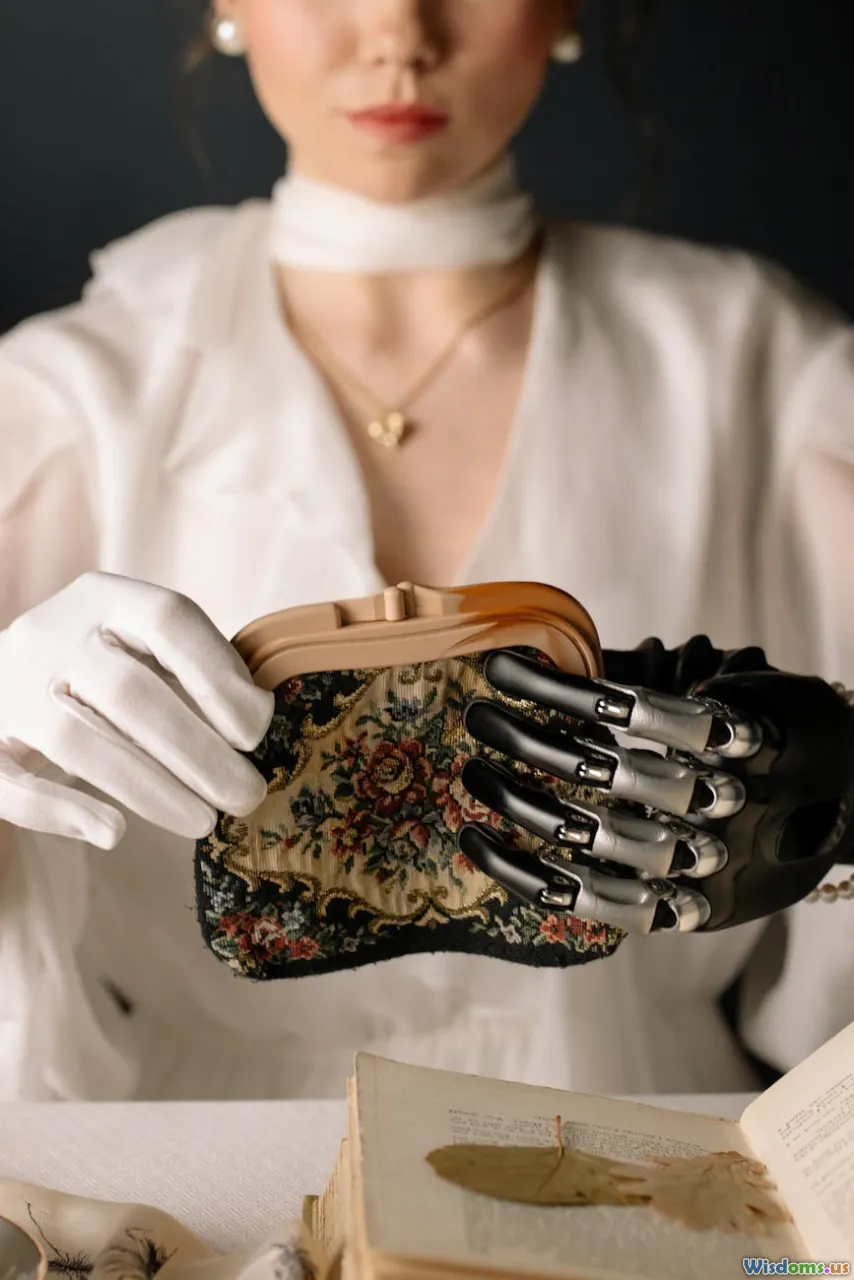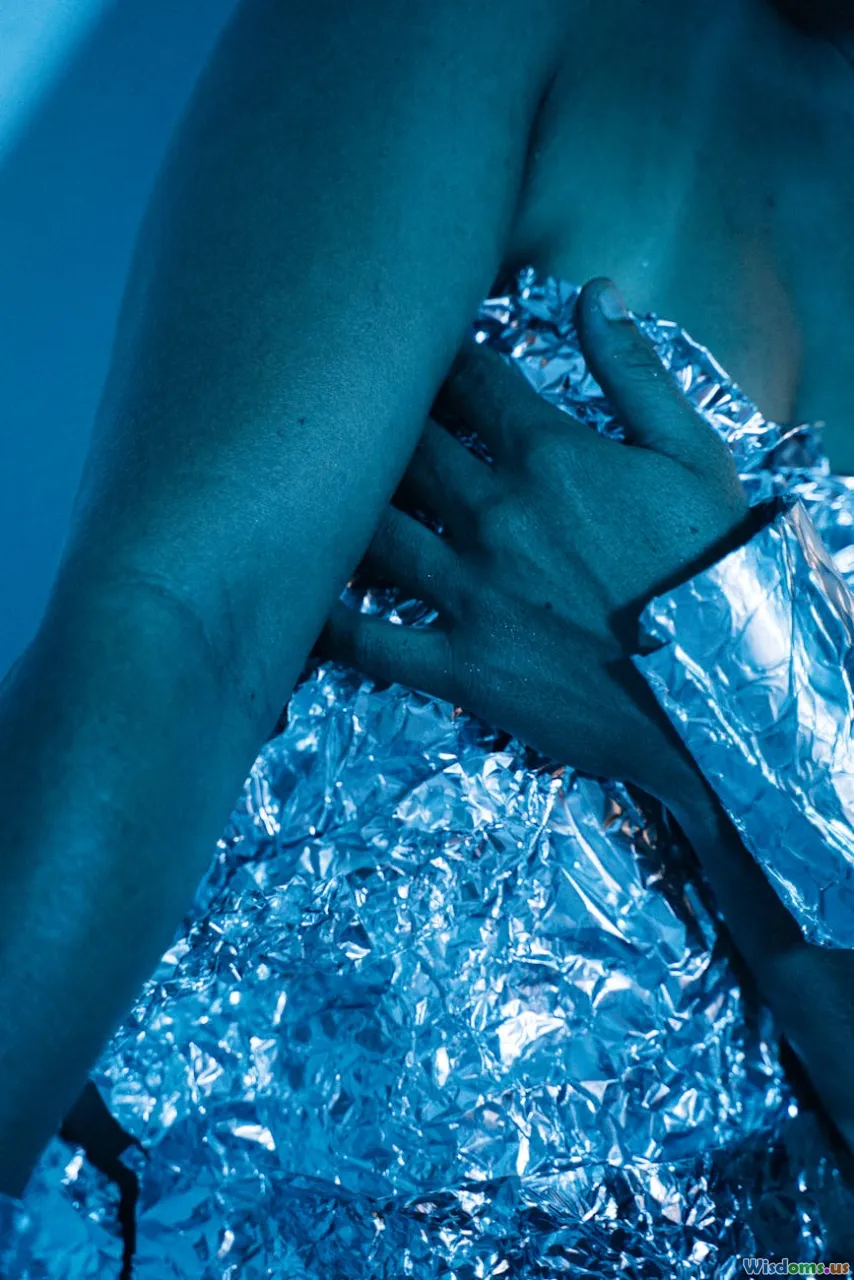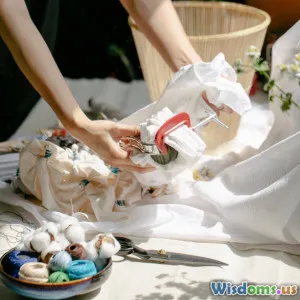
The Rise of Circular Fashion and Its Impact
15 min read Explore how circular fashion is reshaping sustainability and the global fashion industry. (0 Reviews)
The Rise of Circular Fashion and Its Impact
Fashion is no stranger to reinvention. Today, however, it's not styles but systems that are being overhauled. As unsustainable resource consumption and textile waste threaten environmental and social balance, a new ethos is threading its way through the industry—circular fashion. More than a buzzword, this philosophy aims to revolutionize how we create, consume, and dispose of clothes, promising a future where style and sustainability walk the same runway.
Understanding Circular Fashion: Beyond Sustainability

For decades, the industry has operated on a linear model: take, make, use, dispose. Circular fashion interrupts this flow, looping the life cycle of garments so resources are used and reused for as long as possible. Rather than seeing clothes as disposable, it frames each garment as a valuable asset at every phase — from design to recycling.
At its core, circular fashion is about designing products with their next life in mind. For instance, brands are:
- Selecting recyclable materials: Stella McCartney uses regenerated nylon and closed-loop production for her collections.
- Promoting repair & resale: Patagonia’s "Worn Wear" initiative repairs and resells gear, avoiding landfill waste.
- Enabling recycling: H&M’s garment collection bins turn old clothes into new fibres for future collections.
This approach contrasts with traditional, fast fashion's rapid cycles and poor-quality items. By extending product life, closing the resource loop, and reducing dependency on virgin materials, circular fashion offers a pathway toward both environmental stewardship and more conscious consumerism.
Driving Forces Behind Circular Fashion

The rise of circular models traces back to shifting consumer expectations and dire environmental warnings. Shoppers are increasingly aware that apparel accounts for 10% of global carbon emissions, more than international flights and shipping combined. Annually, we throw away about 92 million tonnes of textile waste.
Recent industry surveys reveal:
- Over 60% of Gen Z consumers factor sustainability into fashion purchases.
- Policy changes, like the European Union's Circular Economy Action Plan, mandate eco-design and increased textile recycling.
This mounting pressure is catalyzing:
- Innovation in supply chains: Upcycling materials, harnessing AI to predict demand and prevent overproduction.
- Transparency: Brands like Everlane and Reformation share sourcing maps and impact reports.
Ultimately, the convergence of market demand, technology, and regulation sets the stage for circularity as the next normal in fashion.
How Circular Fashion Works: A Practical Look

Circular fashion isn’t a single strategy but an ecosystem of practices that span:
1. Responsible Design
Designers select monofiber materials, avoid tricky blends, and prioritize easy-to-disassemble components for recycling or repair. Adidas’s FUTURECRAFT.LOOP trainers are made from a single plastic, designed to be ground down and reborn as new shoes.
2. Prolonging Use
By championing quality and versatility, brands encourage consumers to care for and repair garments. Outdoor wear company Fjällräven offers spare parts and lifetime care tips, reducing customer replacement cycles.
3. Rental, Resale & Sharing Models
Platforms like Rent the Runway allow temporary access to designer pieces for events; The RealReal authenticates luxury secondhand shopping; and peer-to-peer options (Depop, Vinted) keep fashion in circulation. According to ThredUp, the secondhand market is projected to double by 2027, vastly outpacing fast fashion's growth.
4. Advanced Recycling
Mechanical and chemical recycling turn old textiles—increasingly including traditionally hard-to-recycle blends—into new fibers. Companies like Renewcell produce Circulose®, dissovling old cotton garments to create fresh, high-quality viscose used by brands such as H&M and Levi’s.
5. End-of-Life Responsibility
Brands encourage (or incentivize) customers to return used clothes for recycling. Eileen Fisher’s "Renew" program has collected over 1.4 million garments, reselling those in good condition and transforming worn-out fabrics into new products.
Circular Brands Changing the Game

Several labels, large and small, are leading with circularity, offering inspiration and pathfinding for skeptics:
- Patagonia: Pioneers in repairability and selling pre-loved gear.
- Stella McCartney: Collaboration with Evrnu and Bolt Threads to integrate recycled fibers and vegan silks.
- MUD Jeans: Subscription jeans system means customers rent jeans, then return them for recycling.
- Filippa K: Their "Lease The Look" service prevents impulse buying and extends clothing lifetimes.
Conventional giants are responding, too. Zara (Inditex) now collects in-store used textiles, and Nike’s Move to Zero campaign includes shoe recycling and take-back points.
Quick Comparison Table: Linear vs. Circular Fashion
| Aspect | Linear Fashion | Circular Fashion |
|---|---|---|
| Design Intent | Fast turnover | Durability, recycling |
| Resource Use | Virgin materials, waste | Recycled, renewable |
| Afterlife | Landfill | Repair, resale, recycle |
| Consumer Role | Passive buyer | Steward, collaborator |
Challenges on the Road to Circularity

While the ideas are promising, the transformation isn’t seamless. Key obstacles include:
- Technological Barriers: Full-scale recycling of blended textiles is still expensive and limited in scope.
- Consumer Habits: Fast fashion’s lure of variety and low prices can outweigh sustainability for many shoppers.
- Collection Logistics: Gathering used clothes at end-of-life from consumers, sorting, and recycling them efficiently remains a challenge, especially outside major cities.
- Transparency & Greenwashing: As sustainability gains traction, some brands make unsubstantiated eco-claims. Consumers need credible certification (like GOTS or Cradle to Cradle) and radical transparency to avoid falling for this “greenwashing.”
Economic incentives, extended producer responsibility regulations, and investments in next-generation recycling offer hope for scalable solutions.
Actionable Steps for Consumers

Consumers are not powerless in shaping the future of fashion. Here are concrete steps to participate in and amplify circularity:
- Buy less, choose wisely: Invest in high-quality, timeless pieces from reputable brands. The average person buys 60% more garments than 15 years ago and keeps them half as long.
- Care for your clothes: Follow care-label instructions to prolong life and reduce microfibre shedding.
- Repair, don’t replace: Mending holes, darning socks, and reattaching buttons both save money and reduce waste.
- Explore resale and rental: Buy pre-loved, sell unwanted garments on platforms like Poshmark, or try a clothing rental for special occasions.
- Return clothing for recycling: Use brand take-back programs or local charities that partner with textile recyclers.
Forward-Thinking Innovations Shaping Circular Fashion

Technology stands at the heart of circular fashion’s future. Consider these promising developments:
- Fiber-to-fiber recycling breakthroughs: Companies such as Infinited Fiber Company, Worn Again, and Ambercycle deploy chemical processes that recover high-quality polyester and cellulose fibers from old clothing.
- Digital IDs and traceability: Pangaia and Eon partner to embed digital tags in garments, giving every product a 'passport' for authenticity, care, and recycling guidance.
- Biodegradable & bio-based textiles: Mylo™ (mushroom leather), Orange Fiber (from orange peels), and Piñatex (pineapple leaves) offer nature-friendly alternatives to PVC- and polyester-based fabrics.
- AI-powered inventory management: Reducing overstock and waste, AI is reshaping how brands forecast demand and manage returns.
Startups are also leveraging Blockchain to record every step of a garment's life cycle, ensuring renewed consumer trust in sustainability claims.
How Brands, Governments, and Individuals Must Collaborate

A successful transition to circular fashion will require the collective efforts of manufacturers, policy makers, and consumers. Recommended actions include:
- Policy changes: Governments can implement extended producer responsibility (EPR) laws that make brands responsible for post-consumer waste; in France, the AGEC law already mandates recycling for unsold clothing.
- Industry alliances: Organizations like the Ellen MacArthur Foundation and Fashion for Good foster innovation and shared roadmaps, helping scale pilot programs.
- Brand commitments: New business models such as Clothing-as-a-Service, textile leases, and lifetime guarantees depend on genuine brand investment and reconsidered profit systems.
These coordinated efforts create an environment where circularity becomes not an exception but an expectation, mainstreaming sustainable choices.
Circular Fashion Success Stories and Measurable Impact

The result of circular initiatives is more than environmental. They demonstrate strategic business value:
- Revenue from Resale: The RealReal’s listings have quadrupled since 2017, proving circularity can be commercially viable.
- Waste Reduction: Levi’s Wellthread line integrates recycled denim; each pair uses less water and diverts 8-10 plastic bottles from landfill.
- Community Empowerment: Social enterprises like Fashion Revolution connect supply chain workers with consumers, amplifying transparency and worker welfare.
- Valid impact measurements: Eileen Fisher’s renewals have saved over 1,000 tons of garments from landfills—effectively the CO2 equivalent of taking hundreds of cars off the road for a year.
What Lies Ahead: The Promise of Circular Fashion

Circular fashion is much more than a fleeting movement or rebranding exercise. It represents fashion’s most daring bid yet to reclaim artistry, value, and responsibility. Fueled by advanced technology, evolving policy, and a global groundswell of conscious consumers, it delivers actionable hope in an industry often marred by excess.
As this transformation gathers momentum, the most stylish wardrobes will also be the most thoughtful—circulating garments’ value and stories for generations. Whether you’re a designer, retailer, or consumer, participating in this circular revolution is not just possible—it’s inevitable, compelling, and, ultimately, profoundly rewarding.
Rate the Post
User Reviews
Popular Posts













